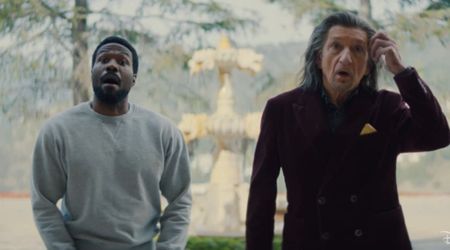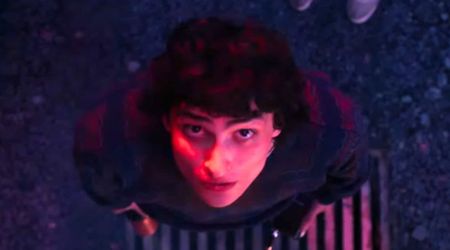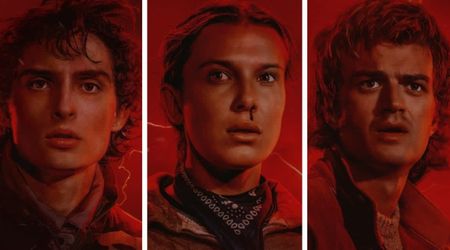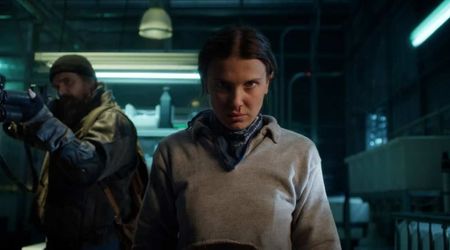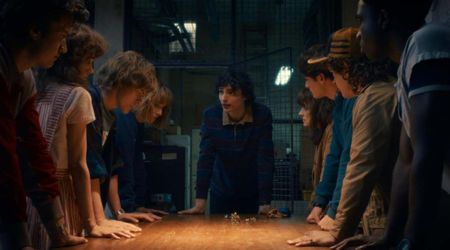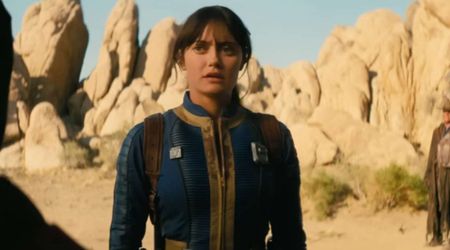'&MUSIC': A beautifully directed work of art that shows us what goes into creating a jaw-dropping performance

Quibi’s ‘&MUSIC’ dropped on April 6 and features an in-depth look at how the music industry functions, and more specifically, looks at the collaborators and teams that have brought some of the greatest shows to life.
Given that the show’s episodes are only 10 minutes long, you might expect to get some very short bites into different aspects of putting a performance together. Each episode, however, features a wealth of content packed into a very short amount of time, including introducing concepts and delving into the backstories of each collaborator being featured, but you never find yourself lost in a sea of new things.
And for that, some serious praise needs to be given to the show's directors JP Stiles, Harrison Macks, Calmatic, and Michael D Ratner, as well as the teams they worked with because, despite different teams working on different episodes, the whole show flows beautifully and seamlessly. It seems like there was a clear vision behind it, and that really shines through.
One standout feature of ‘&MUSIC’ is the fact that each episode has a main plot and something that serves as an underlying theme that is hinted at but really only manifests towards the end.

Episode 1, ‘Light & Music’ discusses the importance of stage lighting as told to us through light director and creative director Gabe Fraboni and DJ Martin Garrix. The two are perfectly in sync during a performance, and both are often working their magic live in collaboration with one another - Garrix with his music and Fraboni with the lighting.
For Fraboni, understanding how to use lighting without needing to verbally communicate with the artist he is working with stems from his experiences with his non-verbal brother. Disability, thus, serves as an underlying theme in this episode, and it's a beautiful way to highlight how different people experience and communicate with the world in different ways.
Episode 2, ‘Dance & Music’ follows choreographers and creative directors Scott and Brian Nicholson and Ariana Grande as they put together the routines for her ‘Sweetener World Tour’. Grande was extremely involved in the process of bringing the show together and the twins were integral to helping her bring her vision to life. The 'SWT' was noticeably unique in that it did not have Grande under a spotlight in the lead, instead having her blend in with her crew, and it shed traditional gender roles for dancers and subverted expectations in its own unique ways.
The twins speak about their experiences of being from the LGBTQIA+ communities, which serves as a secondary theme in this episode, and describe how that is an important aspect of how they come up with choreography, particularly the fluidity in motion they are able to create when they don't need to conform to existing standards.

Episode 3, ‘Mind & Music’ highlights the often-overlooked importance of mental health among entertainers with spiritual guide and mentor Ramiro Agudelo and J Balvin giving us glimpses into how anxiety plays out when your job is to get on stage and entertain huge crowds. It does a wonderful job of addressing how important it is to remain grounded and connected with oneself even as life throws you the most unexpected curveballs.
This episode features both English and Spanish in addition to discussing how coming from poorer backgrounds leads to limited opportunities, and thus allows for the underlying theme of sociocultural issues and equal opportunity to shine through.
Episode 4, 'Style & Music' with fashion stylist Jasmine Benjamin and Anderson Paak is all about bringing an artist's music and unique personality to life aesthetically. It gives us a brief look into how difficult it can be to style for a show, and highlights how important feeling and looking good is to a performance.
The underlying theme in this episode revolves around self-acceptance, particularly embracing your own weirdness and creating your own unique vibe. It's an encouraging episode that focuses on a person's growth and evolution and how none of that ever needs to be traditional or follow the beaten path to be considered "good".

Episode 5, 'Audio & Music' with mix engineer Derek Ali aka 'MixedByAli' and rapper YG, is unique in this set. Like the other episodes, it looks at how a collaborator works with an artist to bring their vision to life. But this episode features technical terms that might be hard for viewers to understand. Yet every time a technical aspect is brought up, the sound and visuals are altered so we understand exactly what Ali is referring to. There is one stunning sequence that shows Ali mixing the sounds heard in a street, including a lawnmower, cars, and children playing, and this sequence builds into the ending track. It's gorgeous, a little trippy, and highly educational.
Ali also makes visual comparisons between painting and mixing, and peppers in metaphors where he can, which allows the entire episode to be designed in a way that helps you understand what each technical term means.
The episode also briefly touches on how people take the easy way out and hire mixers who work off their computers at home as opposed to opting for larger studios with a wider range of equipment.
Ali makes a strong statement about how mixing shouldn’t be streamlined because every song has its own thumbprint and a mixer needs to find the song’s identity and bring that out. And that can only happen when an artist or label works with the right collaborators.
Another gorgeous element that runs throughout the six episodes is the use of animation such as moving gesture drawings as well as real-life objects and situations to tell each collaborator's story in a unique way.
The last episode, 'Writing & Music' with songwriter-producer-guitarist Andrew Watt and Ozzy Osbourne, uses comic book style art for this purpose.

Watt and Osbourne's episode is particularly stunning because it delves into how writing can come from a place that even the writer themselves doesn't fully understand, making it a very vulnerable process. This episode is electric, so much so that you don't even realize how short it is. It ends '&MUSIC' on a high note, and you can't help but want to get out of your seat and create something right away.
The episode also beautifully ties in the theme of meeting your idols and making your childhood dreams come true, with Watt showing us how he proved himself, regardless of his age, his punk style, or his previous work producing pop music, as being worthy of creating a record for an artist like Ozzy Osbourne.
All six episodes of '&MUSIC' can be streamed on the Quibi app.

